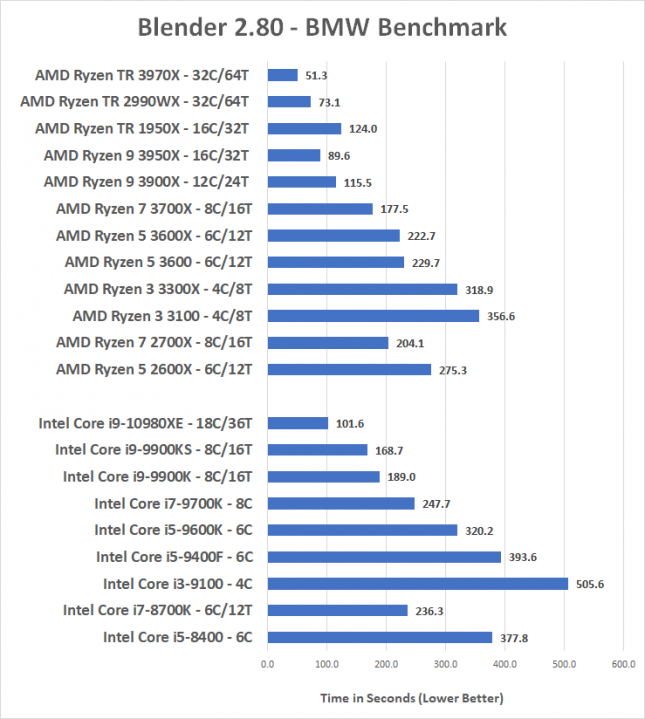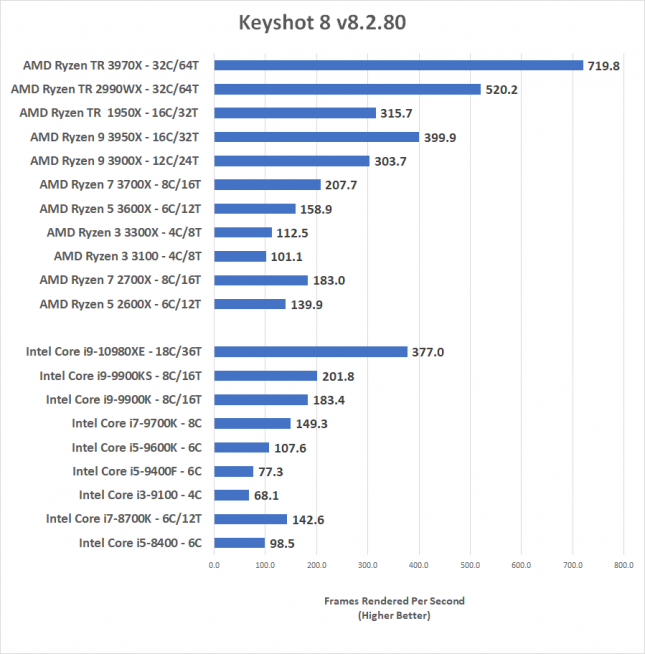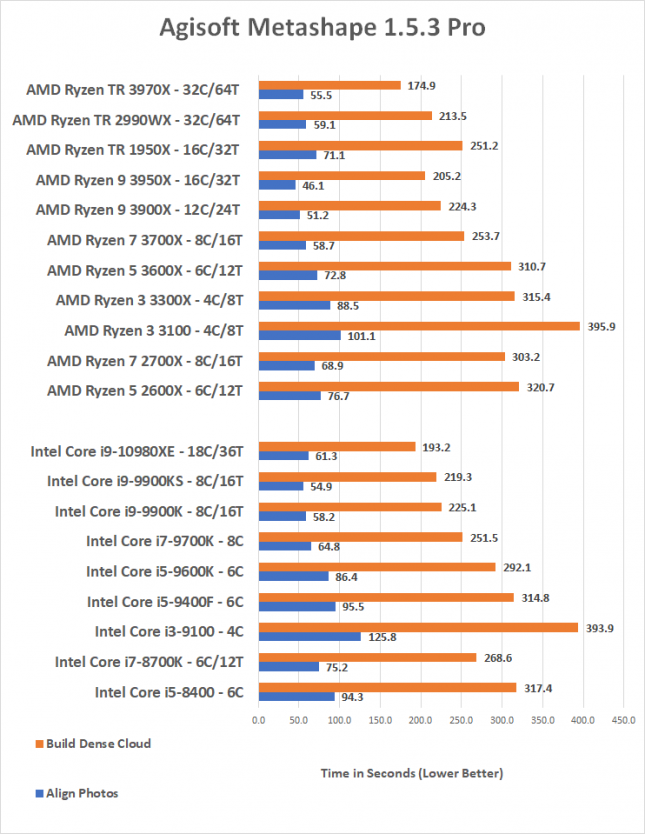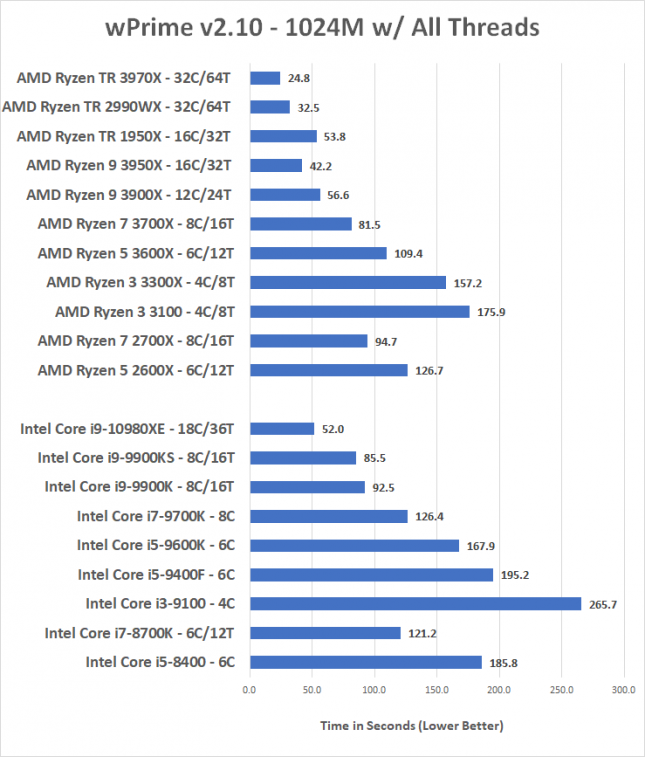AMD Ryzen 3 3300x and Ryzen 3 3100 CPU Review
Blender, Keyshot, Metashape, wPrime
Blender 2.80 Open Source 3D Creation Benchmark: link
Blender is the free and open source 3D creation suite.
KeyShot 8.2 – 3D Rendering and Animation: link
KeyShot 3D rendering and animation software is one of the fastest, easiest way to create amazing, photographic visuals of your 3D data. We installed KeyShot 8.2 to do some benchmarking and real-world stress testing using the camera_benchmark.bip scene that is included with the application. This benchmark tests a 800×554 pixel image with a continuous sample rate and shows the Frames Per Second (FPS) that the scene is being rendered from. This scene has nearly 42,000 triangles and does a good job at using all available cores to render the scene.
Agisoft Metashape Pro 1.5.3 Pro x64 – 2D to 3D Image Manipulation Benchmark: link
Agisoft Metashape (formerly PhotoScan) is a stand-alone software product that performs photogrammetric processing of 2D digital images and generates 3D spatial data to be used in GIS applications, cultural heritage documentation, and visual effects production as well as for indirect measurements of objects of various scales. We us the 50 images from the ‘Building‘ sample data download page for our benchmark. We take the total time it takes to complete four steps: Align Photos, Build Dense Cloud, Build Mesh, Build Texture with all the default settings for each.
wPRIME v2.10 – link
wPrime is a multithreaded benchmark for x86 processors that tests your processor performance by calculating square roots with a recursive call of Newton’s method for estimating functions, with f(x)=x2-k, where k is the number we’re square rooting, until Sgn(f(x)/f'(x)) does not equal that of the previous iteration, starting with an estimation of k/2. It then uses an iterative calling of the estimation method a set amount of times to increase the accuracy of the results. It then confirms that n(k)2=k to ensure the calculation was correct. It repeats this for all numbers from 1 to the requested maximum. We ran this benchmark test on all available threads for each processor.




